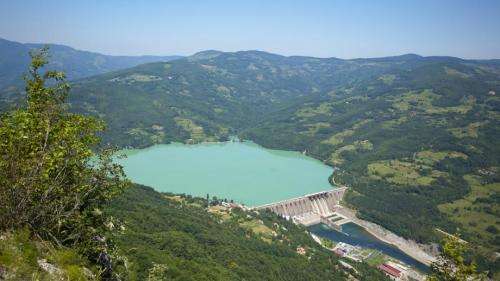Get the science right to value nature

An international group of scientists, industry representatives and policymakers wants to set guidelines for the science behind valuing nature.
The group has published new guidelines in the latest edition of Science on how to value the benefits and services that nature provides, known as ecosystem services.
The guidelines will help governments, policy-makers and business leaders make more informed decisions about major projects that impact ecosystems.
"Recognising the value of ecosystem services and providing appropriate incentives to manage them has the power to transform our societies," said one of the authors, Professor Robert Costanza from Crawford School of Public Policy.
"There is a complicated interconnection between human well-being and the functioning of ecosystems," said Professor Costanza.
The guidelines are a set of six basic criteria for the underlying science behind projects that provide incentives (monetary or other) to protect, restore, or create ecosystem services.
Various forms of payment for ecosystem services (PES) already exist around the world, such as the long-running Conservation Reserve Program in the United States, worth $1.8 billion annually, and the more recent $43 billion Grain for Green program in China.
Not all PES systems have been successful, which prompted the group to develop scientific guidelines to increase the chance of success.
The guidelines state that the baseline of the system must first be documented, and the dynamics of the ecosystem services and the trade-offs and synergies between different services should be also understood.
The ecosystem should also be monitored, and robust metrics used to assess the progress. The program should also be designed with a view to ecological sustainability.
The group reviewed 118 PES programs from around the world against their criteria, and found only 47 met all six criteria.
"We hope these guidelines will help PES programs to succeed," Professor Costanza said.
"PES systems can be really beneficial. For example in Costa Rica, the system provided economic incentives strong enough to reforest the entire country in a relatively short period of time."
"However Costa Rica's system could be even better, if they followed the suggested guidelines," he said.
Financial incentives can be powerful and effective in the right circumstances.
However, decision makers should use culturally and socially appropriate incentives, which are not always financial, says Professor Costanza.
"Prizes, rewards or recognition might be more effective in some situations," he said.
"For example, some indigenous cultures are not in the money economy – you need to find out what the most culturally appropriate reward system is."
Professor Costanza urged creativity in designing PES systems that can manage our ecosystems as community assets.
"They need to use the appropriate incentives, but go well beyond simple market exchanges," he said
"Common asset trusts may be a more appropriate institutional structure within which to embed PES systems."
More information: "Get the science right when paying for nature's services." Science 13 March 2015: Vol. 347 no. 6227 pp. 1206-1207. DOI: 10.1126/science.aaa1403
Journal information: Science
Provided by Australian National University



















